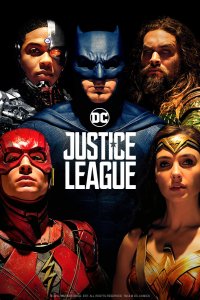“The Revolution Will Be Televised”: A Review of The Hunger Games: Mockingjay – Part 1
 by Gary Westfahl
by Gary Westfahl
Most people watch films because they want to be entertained, and they read reviews in order to learn whether a new movie is entertaining. In the case of The Hunger Games: Mockingjay – Part 1, one can quickly address those individuals’ concerns: yes, it is a bit slow-moving at times, as the screenwriters are contriving to stretch the plot of one popular novel to generate two popular films, but the film otherwise qualifies as a well-crafted, involving adventure that will seem well worth the price of admission. Yet a few unfortunate individuals feel compelled to watch films in order to determine what makes them interesting, and with no strong desire to be diverted by the spectacle of attractive, likable young people triumphing over despicable adversaries, I have been studying the films of the unfolding Hunger Games saga as a revealingly successful effort to reflect the attitudes and opinions of the teenagers and young adults in their target audience. And, in a manner that is both fascinating and annoying, this new film offers additional insights into the minds of America’s future leaders.
To summarize the lessons so far learned: The Hunger Games (2012) (review here) suggested that today’s young people see themselves as the victimized residents of a competitive, impoverished world governed by cruel and privileged adults. Its sequel, The Hunger Games: Catching Fire (review here) further indicated that they are counting on a few enlightened adults to come to their rescue while they passively wait for their lives to be improved. Yet the second film makes another point which comes to the forefront in this third film: the young people still have an important role to play, since only they can inspire those adults to take action. In other words, the young are important figures in their society not because of anything they have done, or might do, but simply because of what they are, which is absolutely wonderful.
Thus, the central question in The Hunger Games: Mockingjay – Part 1 is this: as a growing army of rebels struggles to overthrow the corrupt, evil government of Panem, they will succeed if and only if the virtuous Katniss Everdeen (Jennifer Lawrence), rescued from the second Hunger Games and relocated to the rebel stronghold in District Thirteen, steps forward to serve as their spokesperson; they will fail if the government’s young advocate, Peeta Mellark (Josh Hutcherson), proves to be more persuasive. To realize how bizarre this scenario is, imagine an alternate history of the 2012 presidential campaign in which Barack Obama is confident of victory because he is broadcasting daily messages of support from Justin Bieber; as his countermove, Mitt Romney is relying upon the daily eloquence of Selena Gomez; and political commentators are focusing all of their attention on the competing statements from these charismatic teenagers, sure that they will prove to be the decisive factors in determining which candidate succeeds. But in the real world, as the film does not wish to acknowledge, adults usually are best persuaded by other adults and have no particular respect for, or interest in, the opinions of their children.
Now, it is true that, at times, very young people can emerge, due to their unusual experiences, as inspirational figures in fighting for important causes; one might mention, for example, Malala Yousafzai, the young Pakastani woman who was almost killed because of her strong desire to receive an education and later became an advocate for women’s rights in her country. Katniss might be regarded as her fictional counterpart, a young woman who triumphed over adversity and thus earned the admiration and attention of her fellow citizens. Yet people are not continuing to fight for human rights in south Asia solely because of the continuing efforts of Malala Yousafzai, and they are not going to forever abandon their efforts if she ever decides to withdraw from public view. Malala Yousafzai, in other words, did not become the most important person in her country; yet in this film, this is precisely what Katniss Everdeen has become.
All right, one might say, the film indicates that contemporary youth have an exaggerated sense of their own importance to accompany an exaggerated perception that they are being oppressed by adults , themes which also emerged in another recent film, The Maze Runner (review here). Yet in one significant respect, The Hunger Games: Mockingjay – Part 1 diverges from the novel to make life easier for its young protagonists, mitigating Collins’s general emphasis on unsympathetic adults. In the novel, District Thirteen has a government that, in some respects, seems as dictatorial and controlling as Panem’s Capitol: every citizen must adhere to a strict daily schedule and innumerable rules; Katniss faces potential punishment because she disobeyed orders when she shot down a hovercraft; the rebel leader, President Alma Coin, seems heartless and distant; people receive only limited amounts of food and regularly remain hungry; and the team members that helped Cinna prepare Katniss’s appearance for the Hunger Games, brought to District Thirteen to handle the same task for rebel broadcasts, are cruelly tortured for stealing trivial amounts of food. The film, however, offers a different picture of District Thirteen: people’s lives do not appear to be overly regimented, and strict rules are only mentioned in passing; Katniss’s attack provokes no complaints or concerns; Julianne Moore’s President Coin, while forbidding at first, gradually seems more warm and likable; a glimpse at Katniss’s plate at one meal indicates that residents are getting reasonably generous portions; and Effie Trinket (Elizabeth Banks), who takes on the role of Cinna’s team in the film, faces no punishment, is told she is free to leave at any time, and must be gently persuaded by Plutarch Heavensbee (Philip Seymour Hoffman) to assist Katniss. In the novels, then, Katniss keeps moving from one set of dictatorial adult overseers to another, while the film’s Katniss, it appears, has finally found a group of nice adults to provide guidance, as exemplified by Hoffman’s relentlessly pleasant Plutarch and other authority figures who are always polite and respectful to Katniss.
It is easy to explain why these changes were made: as noted elsewhere, Hollywood filmmakers despise ambiguity and hence would recoil from a drama involving a character forced to choose between a severely oppressive government and more mildly oppressive rebels; rather, they would prefer to offer a sharp contrast between a thoroughly evil government and thoroughly admirable rebels. This would also suggest, provocatively, that the final film in the series is not going to employ the surprise conclusion of Collins’s novel, on the grounds that it would be far too disturbing for a mass audience. And while that conclusion was perfectly in keeping with Collins’s general theme that adults are not to be trusted, the filmmakers may wish to be less emphatic in conveying that message because, hey, adults buy tickets too.
Filmmakers also resist the notion that audiences can have emotional responses to groups of people, another issue I have raised before, so this film seeks to recast the novel’s story of a mass uprising against a totalitarian government as a personal conflict between the good Katniss and the evil President Coriolanus Snow (Donald Sutherland). This is best illustrated by the film’s revised version of how Peeta was rescued from the Capitol. In the novel, Katniss had nothing to do with the rescue mission, which involved Gale Hawthorne and other rebels sneaking into the Capitol and overcoming some anonymous guards. In the film, as the Capitol seems poised to cut off communication between District Thirteen and Gale (Liam Helmsworth) and the other rescuers, an observing Katniss suggests that they could disrupt the effort if she broadcast a personal message to Snow; the two then engage in a politely combative conversation. A contrived and meaningless confrontation between Katniss and Snow is thus overlaid upon the now-secondary drama of the heroic rescue attempt. (Other scenes have been added showing Snow reacting to events and displaying his sinister personality, but these also may have been inserted merely to kill some time, as the filmmakers faced the challenge of transforming one hour of plot into two hours of film.) The only novelty in the film’s melodramatic structure is that, building upon the name Snow, white is the film’s color of evil – exemplified by Snow’s white beard, his symbolic use of white roses, the white marble covering his palace walls, and the white uniforms of Panem’s vicious Peacekeepers – while the good guys wear black – Katniss’s stylish black outfit and the dark uniforms of District Thirteen’s residents.
The Hunger Games: Mockingjay – Part 1 has other messages to convey about both young people and older adults. Certainly, one of its themes is the overwhelming importance of television as a means of not only influencing public opinion but actually winning a war; in addition to the coup of enlisting Katniss as their figurehead, the rebels are newly optimistic because the brilliant Beetee (Jeffrey Wright) has figured out how to broadcast television messages to Panem’s other districts and, at times, to the Capitol itself. But only a certain sort of television, it emerges, will prove persuasive. Initially, the media expert Plutarch decides to cast Katniss in a scripted commercial (termed a propaganda film or “propo”), having her pose on a simulated battlefield and shout inspiring slogans. But Katniss is not a talented actress, and her former mentor Haymitch Abernathy (Woody Harrelson), watching the ineffectual message, comments, “that is how a revolution dies.” Instead, Haymitch suggests, the rebels need to film Katniss while she is involved in real situations, as only her authentic actions and reactions will prove persuasive. Accordingly, Coin reluctantly agrees to send her into the battlefield, where she can be filmed shooting down an enemy hovercraft with an explosive arrow and responding angrily to the bombing of a hospital. To put it another way, the rebels’ most effective weapon is not scripted television, but reality television.
So it is that the first episode of the rebels’ new reality show, Keeping Up with Katniss, proves a rousing success, as her spontaneous message to Snow – “If we burn, you burn with us!” – provides the edited footage with a rousing conclusion. But an effort to film another episode doesn’t work out as well because of one problem with reality television: the reality one wishes to show may not match the reality on display. Thus, after the rebels survive a government attack, Coin asks Katniss to broadcast a defiant celebration of their survival, and under ordinary circumstances, she would have been in the mood to do so. But she is so worried about Peeta’s survival that she can talk about nothing else, forcing her director Cressida (Natalie Dormer) to turn off the camera. More broadly, though she occasionally offers a strong performance, Katniss generally does not seem comfortable in front of the camera, and this arouses interest, since one generally imagines the young people in her audience, having grown up starring in their friends’ smartphone videos, would have no qualms about constantly being filmed. Yet like those pioneers of reality television, the Osbournes, some individuals may simply grow tired of being followed around by cameras, forcing producers to keep searching for new reality stars. Indeed, in the film, Cressida does recruit a replacement – another popular veteran of the Hunger Games, Finnick Odair (Sam Claflin) – to deliver the message that Katniss could not.
The Hunger Games: Mockingjay – Part 1 also has a point to make about the nature of contemporary war. Wars were traditionally fought primarily by soldiers, who wielded guns and other weapons to kill enemy soldiers; today, in many cases, wars primarily involve pilots dropping devastating bombs on enemy territory. True, in the film, there are brief scenes of Peacekeepers firing machine guns at rebels, and rebels tackling Peacekeepers, but the major way that Panem deals with unruly citizens is carpet-bombing their homes, as both District Twelve and the surface of District Thirteen are reduced to mounds of gray rubble. And hand-held bombs are the rebels’ most effective weapon, as these are used to kill some Peacekeepers and to destroy the dam that supplies the Capitol with electric power. Guns – and in Katniss’s case, explosive arrows – are most usefully employed to shoot down the hovercraft that drop bombs, though we are told that District Thirteen has anti-aircraft missiles as well. With all of this bombing going on, it is odd that the film fails to follow the novel in reporting that both Panem and the rebels have long possessed nuclear weapons that, like the United States and Russia, they have never deployed for fear of starting a nuclear war that would devastate both sides. Yet, as both real events and the film’s events illustrate, atomic bombs may no longer be necessary, as today’s conventional bombs can obliterate entire cities like Hiroshima and Nagasaki just as efficiently as Fat Man and Little Boy.
As a longtime cat owner, I cannot resist noting that this film incorporates a five-minute celebration of cats: revisiting her family home in District Twelve, Katniss is inspired to pick up Buttercup, the cat belonging to her sister Prim (Willow Shields), and bring her back to District Thirteen; knowing that Prim loves the animal, Katniss successfully demands that she be allowed to keep her; during Panem’s attack, Prim endangers her own life by rushing back to retrieve Buttercup because, she says, she “couldn’t live with myself” if she didn’t; and Katniss gains a new understanding of her enemy’s tactics by watching Buttercup haplessly chase after the light cast by a moving flashlight. One can further speculate that Prim resolves to become a doctor because her sense of altruism was bolstered by cat ownership (since cats demand affection even if they do not always provide it). In contrast, the perpetually unhappy and unfulfilled Katniss seems suited only for a career as a hunter or soldier; perhaps Katniss’s real problem is that she is catless. (True, Katniss arguably shows that she is learning to love animals when, while hunting with Gale, she declines to kill a placid deer which has developed no fear of hunters; but this apparent change of heart could also be attributed to political correctness, as filmmakers did not want to offend the growing numbers of people who oppose all forms of hunting by depicting their heroine as a hunter.)
Finally, one does not need to speculate about whether this film will generate a sequel, since its sequel has already been completed and scheduled for release on November 20, 2015 to deprive me of two more days of leisure. The open questions are whether Collins will decide to write another Katniss novel, or sanction another film featuring the character, and whether Jennifer Lawrence will ever want to play this character again. Frankly, I would advise Lawrence to abandon her morose-victim persona and seek more diverse roles, while Collins should devise some imaginative new vehicle to demonstrate that adults are awful and teenagers are terrific. Or, they both might simply relax on their piles of money and let other creative talents profit from this perpetually popular message.









